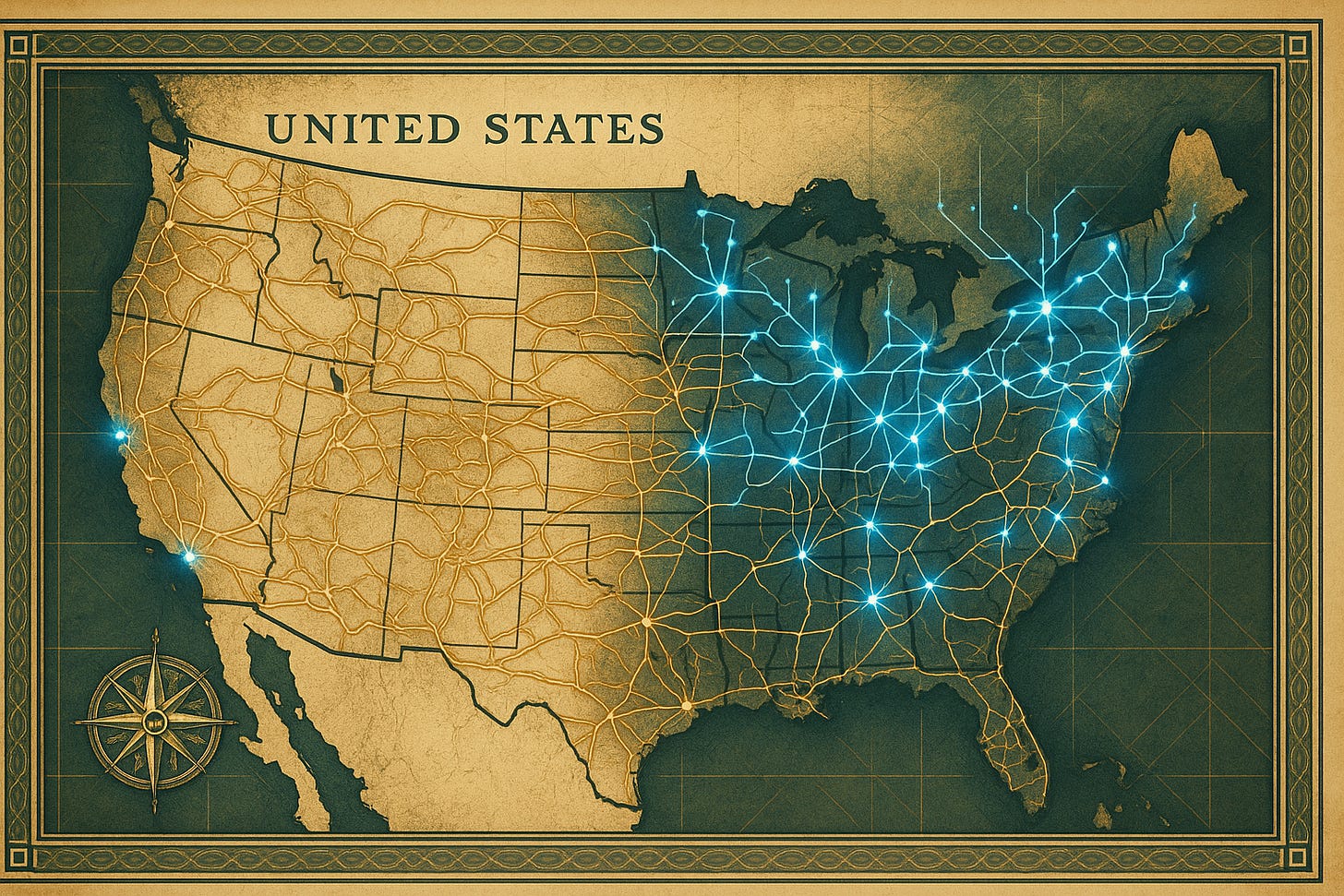The Digital Railway: Why This Tech Giant's Flywheel Is Just Getting Started
The transcontinental railroad carved through the American frontier, connecting isolated resources to distant markets for the first time in history.
The railroad companies of the 1860s promised to transform America's economy, and they delivered. But what they built was simultaneously revolutionary and chaotic. It was a monument to both technological achievement and financial excess.
As railroad networks spread, they created entirely new wealth categories:
Mining operations became profitable overnight when connected to markets
Agricultural regions scaled from subsistence to industrial production
Manufacturing hubs emerged wherever rails converged
Real estate along profitable routes exploded in value
But the railroads also created something else, the first modern economic bubbles.
Railroad companies raised enormous capital through government subsidies and European financing, often building lines to nowhere. The Panic of 1873 and the Panic of 1893, both triggered by railroad failures, crashed the entire economy for years.
Yet from this apparent chaos emerged the foundation of American industrial dominance.
Companies that controlled key infrastructure (Carnegie Steel supplying the rails, Standard Oil powering the engines) became empires. The railroad wasn't just transportation. It was the platform that enabled everything else.
Once those first locomotives crossed the continental divide, the economic advantages became unstoppable. The infrastructure was built. The network effects were locked in. Cities rose. Fortunes were made. Entire industries were born.
Today's Digital Rails
We are experiencing another transcontinental moment. Two secular forces are laying the "rails" of our modern economy:
Cloud computing: moving every business process from isolated local systems into connected, scalable infrastructure.
Artificial Intelligence: providing the computational power that transforms established industries.
Just like the 1800s, today's infrastructure build-out follows a familiar pattern: enormous upfront investment, government support through tax incentives and contracts, and initial skepticism about whether the economics will work.
But history suggests the same outcome.
Once the infrastructure reaches critical mass, the advantages become overwhelming. Winner-take-most dynamics emerge. The companies that control the fundamental infrastructure don't just participate in the new economy. They collect rent from everyone else who does.
There's one company positioned perfectly to benefit from both long-term secular growth trends because it controls key cloud infrastructure and sits at the center of the AI revolution, reshaping entire industries.
Keep reading with a 7-day free trial
Subscribe to Incremental Returns to keep reading this post and get 7 days of free access to the full post archives.


